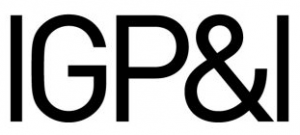The U.S. Coast Guard (USCG) has released updated versions of their marine casualty reporting forms, commonly referred to as the “CG-2692” and Addendums. Members are encouraged to use the most recent version of the reporting forms in future marine casualty reporting and ensure that relevant crews and operational personnel understand the casualty reporting requirements.

The U.S. Coast Guard Publishes Updated Marine Casualty Reporting Forms (CG-2692)
Published 07 August 2019
The updates to these forms are primarily technical, including an updated internet link for the United States Coast Guard Organization Chart which lists the USCG units to whom reporting should be made.
The updated reporting form and Addendums are listed here:
CG- 2692 (07/19): Report of Marine Casualty, Commercial Diving Casualty, or Outer Continental Shelf (OCS)-Related Casualty
CG-2692A (07/19): Barge Addendum
CG-2692B (07/19): Report of Mandatory Chemical Testing Following a Serious Marine Incident Involving Vessels in Commercial Service
CG-2692C (07/19): Personnel Casualty Addendum
CG-2692D (07/19): Involved Persons and Witnesses Addendum
Summary of USCG Marine Casualty Reporting Requirements and Guidance
Reporting requirements for marine casualties generally apply to (1) any vessel involved in a casualty that occurs upon the navigable waters of the United States, its territories, or possessions; (2) U.S.-flagged vessels wherever such casualty occurs; (3) foreign-flagged vessels engaged in Outer Continental Shelf activities; and, (4) foreign-flagged tank vessels operating in waters subject to the jurisdiction of the United States, including the EEZ, where the casualty involves significant harm to the environment or material damage affecting the seaworthiness or efficiency of the vessel. Not all casualties require reporting. The report forms summarize the types of incidents that require reports. The full description of the types of incidents that require reports are set out in 46 CFR § 4.05-1 which provides:
Notice of marine casualty[JK1]
*a) * Immediately after the addressing of resultant safety concerns, the owner, agent, master, operator, or person in charge, shall notify the nearest Sector Office, Marine Inspection Office or Coast Guard Group Office whenever a vessel is involved in a marine casualty consistingin –
(1) An unintended grounding, or an unintended strike of (allision with) a bridge;
(2) An intended grounding, or an intended strike of a bridge, that creates a hazard to navigation, the environment, or the safety of a vessel, or that meets any criterion of paragraphs (a) (3) through (8);
(3) A loss of main propulsion, primary steering, or any associated component or control system that reduces the maneuverability of the vessel;
(4) An occurrence materially and adversely affecting the vessel's seaworthiness or fitness for service or route, including but not limited to fire, flooding, or failure of or damage to fixed fire-extinguishing systems, lifesaving equipment, auxiliary power-generating equipment, or bilge-pumping systems;
(5) A loss of life;
(6) An injury that requires professional medical treatment (treatment beyond first aid) and, if the person is engaged or employed on board a vessel in commercial service, that renders the individual unfit to perform his or her routine duties; or
(7) An occurrence causing property-damage in excess of $75,000, this damage including the cost of labor and material to restore the property to its condition before the occurrence, but not including the cost of salvage, cleaning, gas-freeing, drydocking, or demurrage.
*(8) An occurrence involving significant harm to the environment as defined in § 4.03-65.
Following a marine casualty, the owner, agent, master, operator, or person in charge must provide immediate notice to the USCG, and within five days, must file a written report of the marine casualty. The Form CG-2692 satisfies this written report requirement, and once completed, must be delivered, emailed, or faxed to the Coast Guard Sector, Marine Safety Unit, or Activity nearest the location of the casualty or, if at sea, nearest the arrival port. In addition to the reporting requirement, tollow-up chemical testing is also required in some marine casualties, referred to as Serious Marine Incidents and defined under 46 CFR § 4.03-2.
For years, what constituted a reportable marine casualty or hazardous condition was a source of varying interpretations among USCG units, and thus the source of some industry consternation. In response, the USCG published a Navigation and Vessel Inspection Circular, NVIC 01-15: Marine Casualty Reporting Procedures Guide with Associated Standard Interpretations, a comprehensive and practical document that “provides additional guidance to standardize the collection and reporting of marine casualty data by clarifying existing regulations, policies, and procedures.”
In an effort to add further clarity to industry stakeholders, the USCG subsequently promulgated NVIC 05-17: Reporting and Investigation of Marine Casualties Where the United States is a Substantially Interested State (SIS), and in a Final Rule (effective April 18, 2018), also amended its regulations related to “Marine Casualty Reporting Property Damage Thresholds” which eased the burden of marine casualty reporting by increasing the property damage thresholds for a marine casualty to $75,000 and Serious Marine Incident to $200,000.
Additional USCG guidance on marine casualties, pollution investigations, and drug and alcohol testing can also be found through the Office of Investigations & Casualty Analysis (CG-INV).
Recommendations
Overall, Members and clients with vessels operating in U.S. waters are reminded of the importance of timely marine casualty reporting after the occurrence of a marine casualty, and Members and clients with U.S.-flagged vessels should also be aware of the worldwide application of these USCG reporting requirements. Members are further encouraged to use the most recent version of the reporting forms in future marine casualty reporting and update their policies and procedures, accordingly, including by ensuring that relevant crews and operational personnel have these updated forms at their disposal before an incident occurs. Importantly, these forms must be filled out as completely and accurately as possible, and Members should review the available resources and guidance that Gard and the USCG have published on this topic for further clarifying information.
We encourage readers to also review previous Gard alerts “US marine casualty reporting” (15 July 2016) and “US Coast Guard eases the burden of marine casualty reporting” (10 April 2018).


